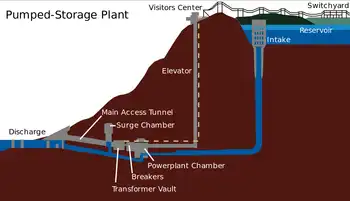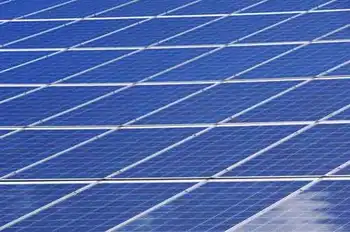Thomas EdisonÂ’s legacy still shines brightly
By Investor's Business Daily
Substation Relay Protection Training
Our customized live online or in‑person group training can be delivered to your staff at your location.

- Live Online
- 12 hours Instructor-led
- Group Training Available
He claimed to have solved the decades-old quest to make a practical incandescent bulb.
He also boasted he could "light the entire lower part of New York City."
Edison 1847-1931 had gained fame as the phonograph inventor a year earlier. So in September 1878, his words were duly reported, creating huge expectations and putting his reputation as the wizard of New Jersey's Menlo Park on the line.
Investors lined up to provide financing, and pressure mounted as he ran into continuous obstacles.
Yet confidence, competitiveness and thinking on a grand scale "propelled him through hundreds of rounds of experiments," said Sarah Miller Caldicott, co-author with Michael Gelb of "Innovate Like Edison: The Success System of America's Greatest Inventor."
A long-burning bulb would elude him for more than a year, and it would take until the fall of 1882 to light lower Manhattan, but Edison's energy never flagged.
In the process, he didn't simply invent the light bulb. He developed an industry for distributing electrical power. Edison, who was awarded a record 1,093 patents by the time of his death, also gave birth to the recording and movie industries and made big advances in phone, telegraph and battery technology.
A lasting bequest was his team approach to innovation, a model for research and development labs.
Visualization was key to Edison's innovative process, Caldicott says. He would draw his ideas on paper and produce prototypes to foster collaboration and problem solving.
The impetus for a light bulb wasn't of Edison's own making. It came from a demonstration by William Wallace, who had developed a generator that transmitted current a quarter-mile to a series of arc lights.
"Edison was enraptured," wrote a newspaper reporter accompanying him. "He ran from the instruments to the lights, and from the lights back to the instruments.... He calculated the power of the instruments and the lights, the probable loss of power in transmission, the amount of coal the instrument would save... and the result of such saving on manufacturing."
Arc lights, or spotlights, required a strong current and produced light too bright for indoor use. After visiting Wallace, Edison was lit with a bolder ambition: to bring electric light into homes and offices.
"Edison's philosophy was to create utility, satisfying a need" and filling a market, Caldicott told IBD.
This became a central consideration for Edison after one of his early inventions was a flop. His electric counter would let legislators vote up or down with the flip of the switch, which he saw as a time saver. But lawmakers cared less about efficiency than twisting arms and horse-trading in a close vote.
Edison's vision of an incandescent-light network steered his work. He knew form had to follow function.
After Edison aired his plans to light lower Manhattan in the press, other experimenters scoffed. They believed that distributing energy over such an area would require so much current and so much copper, the project was economic folly.
"Previous inventors had experimented with low-resistance lamps, but Edison saw that these would never work in the large-scale lighting system that he envisioned," Gene Adair wrote in "Thomas Alva Edison: Inventing the Electric Age."
Edison discovered that much less current transmitted at a higher voltage would be needed to light a high-resistance lamp, which uses material that slows the flow of electricity. His high-resistance filament composed of carbonized cotton thread made possible the savings in energy usage and copper cabling that would make electric lighting competitive with gas lighting.
British physicist Joseph Swan developed a workable incandescent bulb about the same time as Edison, but the filament had low resistance and required heavy copper wiring.
"Swan, the scientist, invented a product Edison produced an industry," Peter Drucker wrote in "Innovation and Entrepreneurship." "So Edison could sell and install electric power while Swan was still trying to figure out who might be interested in his technical achievement."
Edison's success, Drucker wrote, was evidence of "the power of a clear focus" from the outset.
Even before Edison overcame technical challenges, "his light bulb was designed to fit an electric power company for which he had lined up the financing, the rights to string wires to get the power to his light bulb customers, and the distribution system," Drucker wrote.
Caldicott lauded him for "putting people together with diverse expertise. He mixed scientists, chemists, generalists."
Edison's breakthrough with the incandescent bulb "was the product of not just one, but five inventions," Caldicott and Gelb wrote.
Edison relied on Ludwig Boehm, a glass blower, to fashion bulbs that could yield vacuum and keep the filament from burning too fast.
To find the right material for a high-resistance filament, "Edison and his men tried dozens of substances — carbon, chromium, steel, gold, boron, iridium, to name only a few — and fashioned them into a variety of shapes, lengths and thickness," Adair wrote.
"Before I got through," Edison wrote, "I tested no fewer than 6,000 vegetable growths, and ransacked the world for the most suitable filament material."
That helps explain his definition of genius: "One percent inspiration and 99 perspiration."
When his incandescent bulb lit up, he started on a daunting task. "He had to build a central power station design and manufacture his own dynamos to convert steam power into electrical energy ensure an even flow of current connect a 14-mile network of underground wiring," Harold Evans wrote in "They Made America: From the Steam Engine to the Search Engine."
The list went on: insulating the wire, installing fire safety devices, designing meters to measure usage, inventing and producing a plethora of switches, sockets and fuses.
In the process, Evans wrote, Edison launched companies to do the jobs, including progenitors of Con Edison and General Electric GE.
Edison could regularly be found down in the trenches, checking wiring connections in the morning.
All this he set out to accomplish under the glare of klieg lights, so to speak — testing his wares simultaneously in the boardroom of his Wall Street investors and in the newsroom of the New York Times. This was not a man afraid of failure.
At 3 p.m. on Sept. 4, 1882, the switch was thrown, lighting up 800 lamps in 25 buildings.
Just shy of four years after his rash pronouncement, the wizard had made good on his word. "I have accomplished all I promised," he said.











